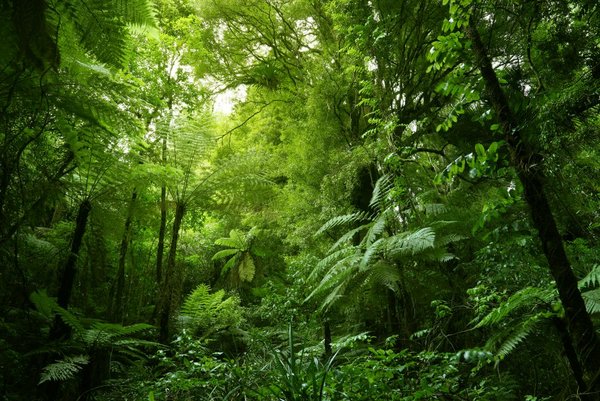 Read this article in French
Read this article in French- Share this article
- Subscribe to our newsletter
Replanting logged forests with diverse seedlings accelerates restoration
The ecological experiments on the island of Borneo were set up by the University of Oxford’s Professor Andy Hector and colleagues over 20 years ago, as part of the South East Asia Rainforest Partnership (SEARRP). This assessed the recovery of 125 different plots in an area of logged tropical forest that were sown with different combinations of tree species.
The results revealed that plots replanted with a mixture of 16 native tree species showed faster recovery of canopy area and total tree biomass, compared to plots replanted with four or just one species. However, even plots that had been replanted with one tree species were recovering more quickly than those left to restore naturally. The findings of the study were published last September in the journal Science Advances.
Greater diversity gives greater resilience
According to the researchers, a likely reason behind the result is that different tree species occupy different positions, or ‘niches’, within an ecosystem. This includes both the physical and environmental conditions to which the species is adapted, and how it interacts with other organisms.
As a result, diverse mixtures complement each other to increase overall functioning and stability of the ecosystem. For instance, some tropical tree species are more tolerant of drought because they produce a greater amount of protective chemicals, giving the forest resilience to periodic times of low rainfall.
Hector added: “Having diversity in a tropical forest can be likened to an insurance effect, similar to having a financial strategy of diverse investment portfolios.” In turn, a diverse mix of trees can support a much wider range of animal life. For instance, hornbills specifically require large mature trees with holes where the females can nest.
One of the world’s biggest ecological experiments
Tropical forests cover just six per cent of the planet’s land surface, but are home to around 80 per cent of the world’s documented species (according to the World Wildlife Fund) and act as major carbon sinks. However, these critical habitats are disappearing at an alarming rate, chiefly because of logging for timber and conversion to palm oil plantations. According to WWF between 2004 and 2017, 43 million hectares of tropical forest were lost – an area roughly the size of Morocco.
Restoring logged tropical forests is a crucial component of efforts to tackle both the nature and climate crises. Up until now, however, it has been unclear whether this is best achieved through allowing forests to restore themselves naturally (using dormant seeds in the soil), or through active replanting.
To investigate, the researchers collaborated with local partners to set up the Sabah Biodiversity Experiment on 500 hectares of logged forest in the Malaysian state of Sabah on the island of Borneo. This was divided into 125 experimental plots. These were either left to recover naturally or planted with mixtures of either one, four or 16 tree species frequently targeted for logging.
The 16 species included several endangered species and the world’s tallest species of tropical tree (Shorea faguetiana), which can reach over 100 m in height. The first trees were planted in 2002, with nearly 100,000 planted (in total) over the following years.
The recovery of the plots was assessed by applying statistical models to aerial images captured by satellites. Within a few years, it became apparent that those with one species did worse than those planted with a mixture of four species, and those enriched with 16 species did best of all.
Lead author Ryan Veryard (who analysed the data as part of his Oxford doctoral studies), said: “Importantly, our results show, that logged forest can recover so long as it is not converted to agricultural uses, such as oil palm plantation. They also emphasise the need to conserve biodiversity within undisturbed forests, so we can restore it in areas that have already been logged.”
The Sabah Biodiversity Experiment team is now starting a new three-year project, funded by the UK Natural Environmental Research Council, to take a census of all the surviving trees in the experiment. This will be combined with a wider range of remote sensing methods (including lidar sensors carried by a helicopter and smaller sensors carried by drones) to give a more comprehensive analysis of forest health.
(Oxford University/wi)
Reference:
Andy Hector et al.: “Positive effects of tree diversity on tropical forest restoration in a field-scale experiment”, SCIENCE ADVANCES, 15th Sep 2023, Vol. 9, Issue 37
DOI: 10.1126/sciadv.adf0938
More information on The South East Asia Rainforest Research Partnership – SEARRP





Add a comment
Comments :